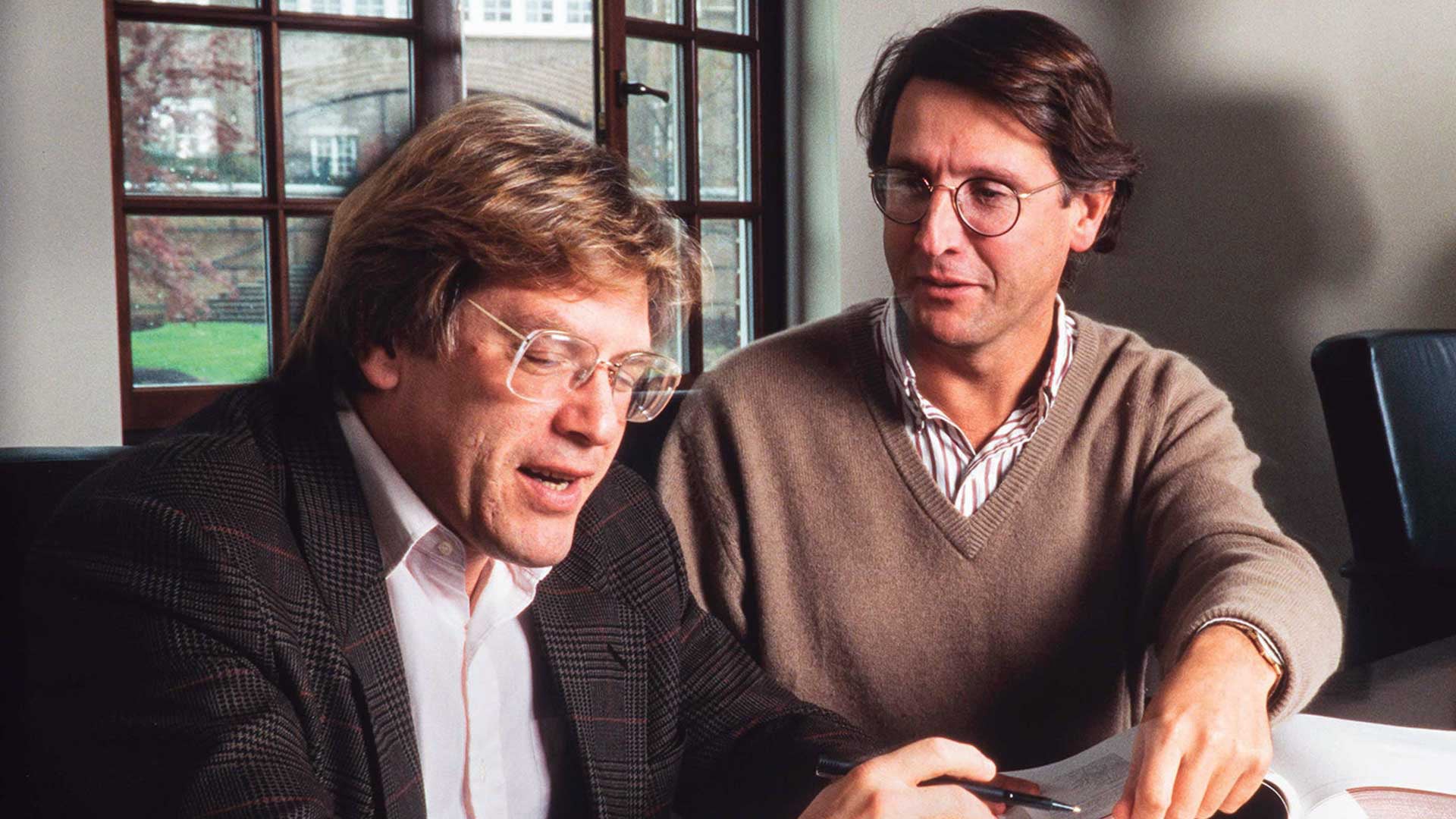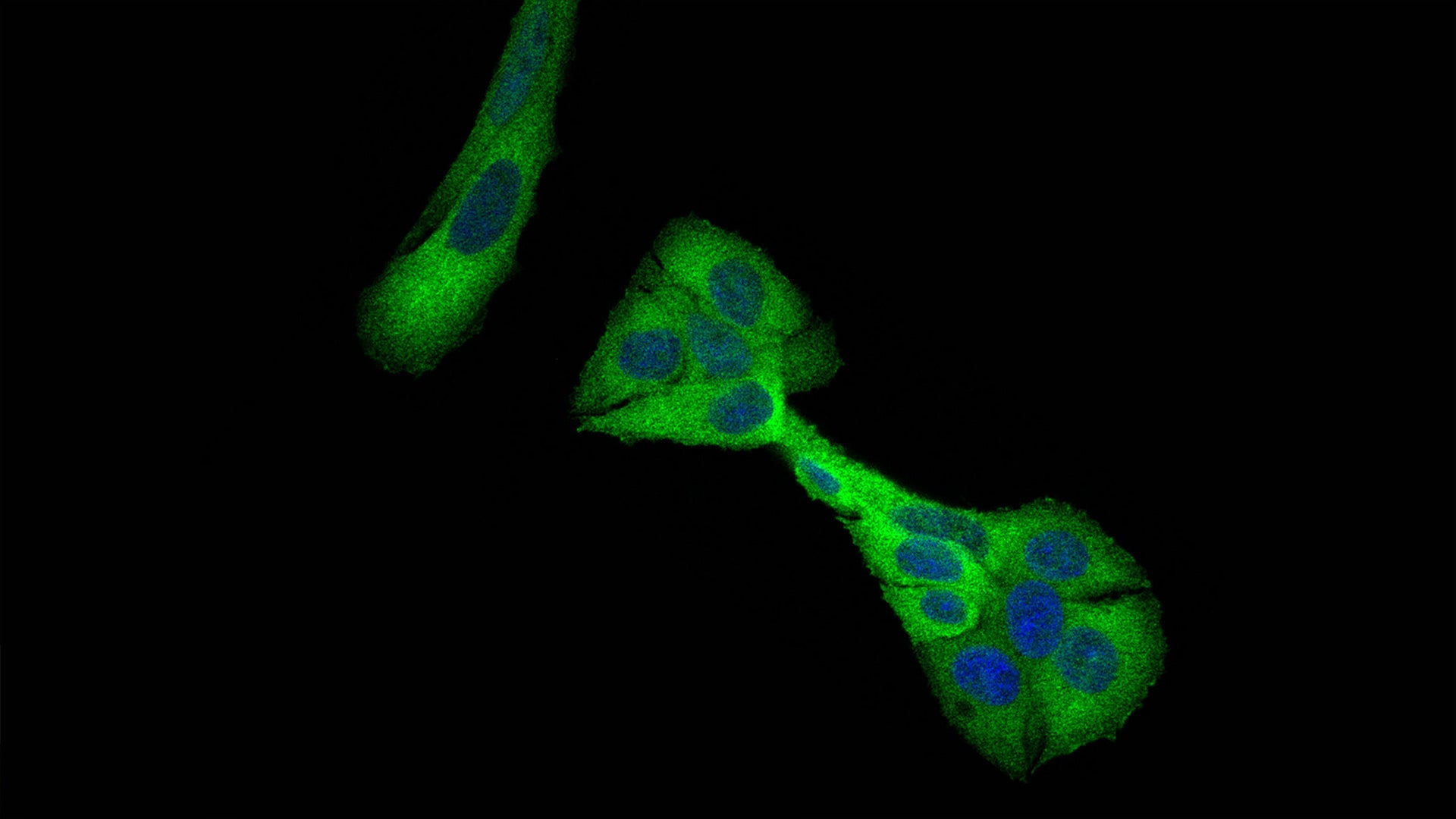Breast cancer is one of the most common cancers among women in the United States, second only to skin cancer. Thanks to decades of fundamental research, it’s also one of the most curable. However, challenges remain, especially when confronting aggressive varieties like triple-negative breast cancer.
Cold Spring Harbor Laboratory (CSHL) has a rich history of breast cancer breakthroughs leading to new drug targets, lifesaving treatments, and improved diagnostic and screening techniques. For World Breast Cancer Research Day, we present five of our top breast cancer–related stories from the past year, starting with a look back at one of the biggest breakthroughs of the past four decades.
From trading faxes to changing lives
When you bring together the best minds in biology, lifesaving science is bound to come to the surface. Case in point: a chance encounter in the early 1990s between then-CSHL scientist David Beach and future CSHL Trustee Charles Sherr revealed that the two investigators were following the same lead. Months later, they’d publish back-to-back papers on a protein called cyclin D. Soon thereafter, Sherr identified the cyclin-dependent kinase CDK4, which forms a complex with cyclin D.

If the clinical implications weren’t apparent then, they would be in time. In 2015, a quarter-century after Beach and Sherr met, the FDA approved palbociclib (marketed as Ibrance) for the treatment of HR-positive, HER2-negative breast cancer. The drug works by targeting CDK4 and CDK6, identified by another former CSHL scientist, Ed Harlow. Taken with hormone therapy, palbociclib has been shown to increase patient survival by more than two years and reduce tumor size by more than 50%.
Palbociclib has become an increasingly common part of clinical breast cancer therapies. It’s now widely considered a “first-line” therapy against HR-positive, HER2-negative breast cancer. And just last October, the FDA approved a new combination therapy using palbociclib in certain cases of advanced or metastatic breast cancer.
A new ‘link’ to triple-negative breast cancer
Triple-negative breast cancer (TNBC) accounts for 10 to 15 percent of all breast cancer cases. It disproportionately affects younger and African American women. No effective therapies exist. As seen on News12, a new discovery by CSHL Professor David Spector and graduate student Wenbo Xu could help point toward the first.

Spector’s group discovered that a rarely studied long non-coding RNA (lncRNA) called LINC01235, previously implicated in gastric cancer, plays a part in TNBC, too. When the team knocked out LINC01235, they found that reducing the RNA’s production suppressed TNBC organoid formation.
Much more research would be needed for scientists to identify a potential treatment for TNBC. However, Spector says, these findings highlight the importance of non-coding RNAs in that search. “Our long-term goal is to try to find a lncRNA or multiple lncRNAs that may eventually be therapeutic targets,” he says.
Women’s health panel
Links between breast cancer and pregnancy can be hard to discuss. Maybe that’s why many of us don’t hear about them in high school health class or on the evening news. For CSHL Associate Professor Camila dos Santos, that’s precisely why the conversation needs to be had.
CSHL Associate Professor Camila dos Santos leads a panel discussion featuring certified OB/GYN Adrienne Mandelberger, Northwell Health Director of Cancer, Pregnancy & Reproduction Ruby Sharma, and Lizelle Comfort, a clinical fellow at Long Island Jewish Medical Center.
Last October, for Breast Cancer Awareness Month, CSHL hosted an event at Grace Auditorium along with Pink Aid. Here, dos Santos delved into the established links between pregnancy and cancer risk. She also spoke about a fascinating study on the potential effects of urinary tract infections on breast health. The talk opened up a lively panel discussion covering a range of women’s health issues.
Importantly, the conversation wasn’t just between scientists and clinicians. An audience of breast cancer survivors and other members of the public also participated. They offered up difficult but important questions that many women may have considered over the years. The event provided a public forum for those questions to be asked and answered honestly.
How breast cancer goes hungry
Last August, CSHL Associate Professor Michael Lukey reported a new way to deprive cancer cells of both a vital nutrient and their backup supply of that nutrient. In lab experiments with breast cancer cells, patient-derived tissue models, and mice, this strategy killed breast cancer cells and shrank tumors.

Previous studies have shown that starving cancer cells of glutamine or preventing its conversion into metabolites can stop the cells’ growth in the lab. However, breast cancer cells adapt to glutamine starvation by switching on a pathway that generates a critical metabolite called alpha-ketoglutarate, normally derived from glutamine.
Inhibitors of both metabolic pathways are now under further investigation. Lukey notes that these pathways might be especially important for breast cancer metastasis to different tissues, including some that are very difficult to treat. He hopes his lab’s combination therapy could ultimately improve the efficacy of glutamine metabolism inhibitors in the clinic. This could mean new effective treatments that target cancer’s metabolic addictions.
A commitment to giving back
Evelyn and Arlindo Jorge believed in philanthropy. The couple wanted to instill in their young family a commitment to giving back. So, every year around the holidays, they asked each of their grandchildren to submit a “proposal” to support something important to them. As a young girl, Stephanie Gibbons suggested her grandparents fund graphing calculators for classrooms and meals for senior citizens.

Losing her mother, Nancy Jorge Torcivia, to breast cancer in 1995 sharpened Gibbons’ philanthropic focus. Now a CSHL Association Director, she proudly continues her family’s tradition of community support. The breast cancer research coming out of Camila dos Santos’ lab recently inspired Gibbons and her family in the Arlindo and Evelyn Jorge Family Foundation to make a generous $1 million donation to CSHL. Thanks to the Jorge family, CSHL was able to completely renovate the dos Santos lab. This revitalization helps ensure that the lab’s crucial research on breast cancer and women’s health will continue for years to come.
Breast cancer research at Cold Spring Harbor Laboratory is made possible in part through the support of private donors. Would you like to find out more? Visit our breast cancer archive for more inspiring stories like these, or go to our Giving page to see how you, too, can help inspire CSHL’s next breast cancer breakthrough.
Written by: Communications Department | publicaffairs@cshl.edu | 516-367-8455
